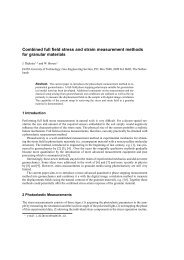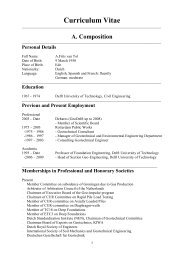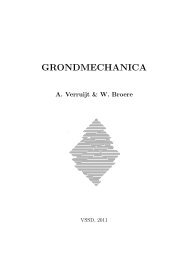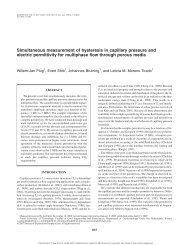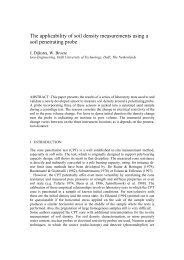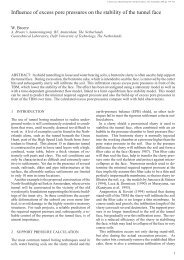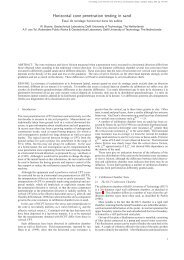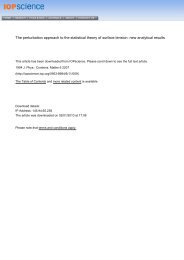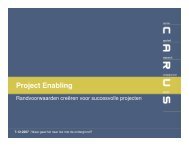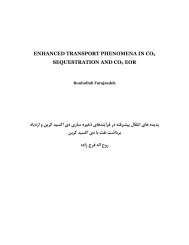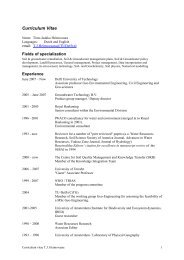Tunnel Face Stability & New CPT Applications - Geo-Engineering
Tunnel Face Stability & New CPT Applications - Geo-Engineering
Tunnel Face Stability & New CPT Applications - Geo-Engineering
Create successful ePaper yourself
Turn your PDF publications into a flip-book with our unique Google optimized e-Paper software.
22 2. <strong>Stability</strong> Analysis of the <strong>Tunnel</strong> <strong>Face</strong>Figure 2.20: Shape of the failure plane in front of tunnel observed in centrifuge test [37]are shown clearly by Calvello [55].A different type of laboratory experiment has been performed by Domon [69]. Using a DiscreteElement Model, which basically is a two-dimensional tunnel face cross section constructedfrom small metal cylinders, he shows that large deformations occur in a wedge shaped area atthe tunnel face and smaller deformations in the overlying strata (Figure 2.21). As with mostcentrifuge and other laboratory tests, this type of experiment is primarily suited to show theshape and extent of the deformations around the tunnel face at a progressed state of collapse, buthas no direct value for the determination of a suitable support pressure.From the laboratory tests it can be seen that the geometry of the failure mechanism in sandand in clay is notably different. Tests in sand show a chimney-like failure mechanism, describedby the wedge stability models. Centrifuge tests on clay show a much larger and widening zoneinfluenced by the instability (see figure 2.22). This is generally consistent with instabilitiesobserved in the field [112].Allersma [4] investigated the influence of a clay layer on the failure mechanism in a trapdoor test. He compared a test on a model simulating 30m of homogeneous dense sand with amodel in which a clay layer of 2m thickness is over- and underlain by dense sand. Both testsshow the same chimney-like failure mechanism and he concludes that the failure mechanism isnot strongly influenced by the presence of the clay layer. This indicates that a similar descriptionof soil arching can be used in heterogeneous layered soils as in homogeneous soils.As said, insight in the limits of allowable support pressure can be gained not only fromlaboratory tests but also to a certain extent from the design guidelines based on previous fieldexperiences. These guidelines do not exactly give the minimal or maximal allowable supportpressures and often do not claim to do so, but give a suitable working support pressure. As thereis a tendency to work with a low support pressure in order to minimize friction and maximizeexcavation speed [62, 165], the design guidelines for the minimal support pressure are often



